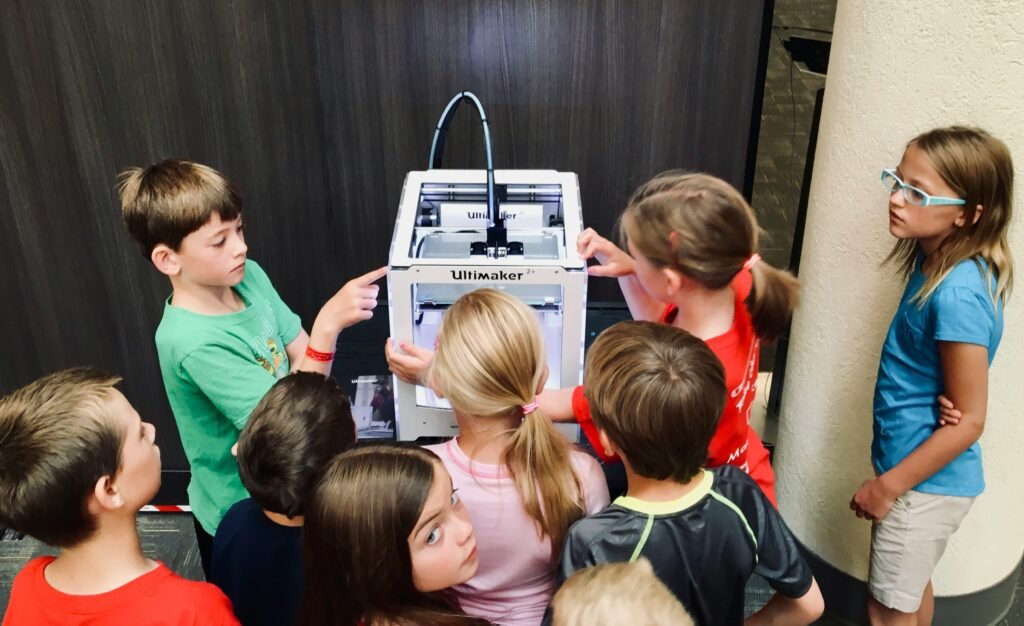Minds at work keeps the world moving.
In recent years, the integration of technology into education has transformed traditional classrooms into dynamic learning environments. In Africa, where access to quality education remains a challenge, smart classrooms are emerging as a powerful tool to bridge the gap and enhance learning outcomes.
Smart classrooms leverage technology to create an interactive and engaging learning experience. They are equipped with tools such as interactive whiteboards, digital projectors, tablets, and high-speed internet, enabling teachers to deliver lessons in innovative ways and students to explore concepts beyond the confines of textbooks.
One of the key advantages of smart classrooms is their ability to cater to diverse learning styles. Visual learners can benefit from interactive presentations and videos, while auditory learners can listen to audio recordings and lectures. Kinesthetic learners can engage with hands-on activities through interactive simulations and virtual labs.
Moreover, smart classrooms facilitate collaborative learning, allowing students to work together on projects, participate in discussions, and share ideas seamlessly. This collaborative approach not only enhances students’ understanding of the subject matter but also develops important skills such as communication, critical thinking, and problem-solving.
In addition, smart classrooms can help overcome infrastructure challenges in remote areas. With the use of mobile technology, students can access educational content online, enabling them to learn anytime, anywhere. This is particularly beneficial in Africa, where many communities lack access to schools or face long distances to travel.
Furthermore, smart classrooms can improve teacher efficiency and effectiveness. Teachers can access a wealth of resources online, including lesson plans, educational videos, and interactive tools, which can enhance their teaching practices and keep them updated with the latest educational trends.
Despite these benefits, the adoption of smart classrooms in Africa faces challenges such as infrastructure limitations, cost barriers, and the need for teacher training. However, with the right investment and support, smart classrooms have the potential to revolutionize education in Africa, empowering students with the knowledge and skills they need to succeed in the 21st century.
OUR FOCUS
To help learning through technology.

STEM
STEM (Science, Technology, Engineering, and Mathematics) fields play a crucial role in shaping our world and driving innovation. From developing new technologies to solving complex problems, STEM disciplines are at the forefront of progress and advancement in society. One of the key reasons why STEM is important is its impact on economic growth. STEM industries are major contributors to the economy, creating high-paying jobs and driving innovation that leads to the development of new products and services. Countries that invest in STEM education and research often experience higher levels of economic prosperity and competitiveness on the global stage. Additionally, STEM education is essential for preparing the workforce of the future. As technology continues to advance, there is a growing demand for workers with STEM skills. By encouraging more students to pursue STEM fields, we can ensure that our workforce is equipped with the knowledge and skills needed to succeed in the 21st-century economy. STEM also plays a critical role in addressing some of the world's most pressing challenges, such as climate change, healthcare, and cybersecurity. By applying STEM principles, researchers and innovators can develop sustainable solutions to these complex problems, ensuring a better future for generations to come. In conclusion, STEM is not just a collection of academic disciplines; it is a driving force behind progress, innovation, and economic growth. By investing in STEM education and research, we can create a brighter future for all.

PROGRAMMING
One of the key advantages of smart classrooms in enhancing kids' programming skills is the use of interactive tools and software. These tools, such as coding games and educational apps, make learning to code more engaging and enjoyable for young learners. Through hands-on activities and challenges, students can experiment with different programming concepts, learn from their mistakes, and develop a deeper understanding of how code works. Smart classrooms also offer access to a wide range of resources and materials that can aid in the learning process. Online tutorials, video lectures, and interactive lessons can supplement traditional classroom instruction, allowing students to learn at their own pace and explore topics that interest them. Additionally, smart classrooms often have access to the latest software and technology, giving students the opportunity to work with cutting-edge tools and develop skills that are relevant in today's digital world. Another benefit of smart classrooms is the emphasis on collaborative learning. Through group projects and peer-to-peer interactions, students can share ideas, solve problems together, and learn from one another's experiences. This collaborative approach not only helps to improve programming skills but also fosters teamwork and communication skills, which are essential in the field of programming. Furthermore, smart classrooms provide a more personalized learning experience for students. Teachers can use data analytics and other tools to track students' progress, identify areas where they may be struggling, and provide targeted support and feedback. This personalized approach ensures that each student is challenged at an appropriate level and has the support they need to succeed. In conclusion, smart classrooms are a valuable tool for enhancing kids' programming skills. By providing a dynamic and interactive learning environment, access to a wide range of resources, and opportunities for collaboration and personalized learning, smart classrooms can help students develop the skills they need to succeed in the digital age

Toys
A smart classroom can facilitate children in creating toys by providing various tools and resources that enhance their creativity and learning. Here are some ways it can be achieved: Digital Design Tools: Smart classrooms can provide access to digital design software and tools that allow children to design and create virtual prototypes of their toys. 3D Printing: Smart classrooms equipped with 3D printers can enable children to bring their toy designs to life by creating physical prototypes. Coding and Robotics: Teaching coding and robotics in smart classrooms can empower children to create interactive and programmable toys, fostering their understanding of technology and engineering principles. Online Resources and Tutorials: Smart classrooms can provide access to online resources and tutorials that guide children through the toy-making process, helping them learn new skills and techniques. Collaborative Projects: Smart classrooms can facilitate collaborative projects where children work together to design and create toys, promoting teamwork and communication skills. Integration with Other Subjects: Integrating toy-making projects with other subjects such as science, math, and art can make the learning experience more engaging and meaningful for children.

SKILL DEVELOPMENT
Skills developed in a smart classroom can definitely be transferred into the real world. Smart classrooms often emphasize technology, collaboration, critical thinking, and problem-solving skills, all of which are highly valuable in real-world settings. Technology Skills: Smart classrooms use various technologies such as interactive whiteboards, tablets, and educational software. Proficiency with these tools can translate to using similar technologies in professional settings, such as project management tools, video conferencing, and data analysis software. Collaboration: Smart classrooms often encourage collaborative learning through group projects and discussions. This skill is invaluable in the real world, where teamwork is essential in many professions. Critical Thinking: Smart classrooms often emphasize critical thinking skills by encouraging students to analyze information, draw conclusions, and solve problems. These skills are crucial in many professions, especially those that require decision-making and problem-solving abilities. Adaptability: Smart classrooms often expose students to new technologies and teaching methods, fostering adaptability to change. This skill is essential in today's fast-paced world, where technology and industries are constantly evolving. Communication: Smart classrooms often incorporate communication skills, such as presenting ideas and participating in discussions. These skills are vital in the real world for conveying information effectively and collaborating with others. Time Management: Smart classrooms often require students to manage their time effectively to complete tasks and assignments. This skill is crucial in the real world for meeting deadlines and balancing multiple responsibilities.
Dedicated Team of board members

Chris Smith

Jada Dawson

William Gibbs

Rosa Parks
Are you a private school owner? Apply for our team members to help you setup a smart learning environment.
In this day and age, having a smart classroom is more of a necessity and a priority. Technology is advancing at a lightening speed and no child should be left out of this.

Let's win your case
Why Choose Our Legal Services

Experienced Attorneys
Lorem ipsum dolor sit amet, consectetur adipiscing elit. Ut elit tellus, luctus nec ullamcorper mattis, pulvinar dapibus leo.

Best Case Strategies
Lorem ipsum dolor sit amet, consectetur adipiscing elit. Ut elit tellus, luctus nec ullamcorper mattis, pulvinar dapibus leo.

With You - From Start to Finish
Lorem ipsum dolor sit amet, consectetur adipiscing elit. Ut elit tellus, luctus nec ullamcorper mattis, pulvinar dapibus leo.
What Our Clients Say



Request a Free Consultation
